You might be looking for results-driven strategies to get clients for your outsourcing business. If you’re confident in your services and want to scale your company, the strategies I’m about to share could be game-changers.
The strategies I’ve shared are widely used by companies, and I’ve also included one overlooked marketing strategy that can be a great resource for finding outsourcing clients, whether you’re a new startup or looking to scale faster.
Especially, the competition is pretty low for BPO domains—such as call centers, customer service, human resources, and finance.
For instance, as mentioned in this client acquisition guide for call centers, we noted that over 10,000 businesses are seeking to outsource their customer support each month, and the competition isn’t high.
I won’t say it will be easy to find outsourcing clients; these strategies need to be executed perfectly. However, the outsourcing market offers immense potential for the following reasons.
According to statistics, outsourcing businesses are expected to grow by 9% by 2030, with global revenue increasing by 150% this decade.
This means more businesses are preferring outsourcing their processes due to its benefits.
So, whether you’ve recently started your outsourcing company or want to scale an established one, success can come more easily by leveraging these inbound and outbound marketing strategies, discussed below.
Key Points:
- Ideal Customer Profile (ICP): Prepare a detailed ICP, focusing on key client attributes like industry, size, and pain points.
- Unique Selling Point (USP): Highlight what makes your company unique and better than competitors to create a strong value proposition.
- Content Marketing: Establish authority and trust through consistent online content like blogs, case studies, and social media.
- Cold Outreach: Engage potential clients with compelling cold emails and calls, followed by strategic follow-ups.
- SEO: Boost organic visibility by optimizing your website for search engines to attract potential clients without additional ad spend. Currently, it’s the least competitive market for acquiring clients, thus, a goldmine for BPO firms.
As I keep researching the BPO industry, I’ve noticed that many outsourcing companies don’t fully leverage all available marketing strategies.
For instance, within company culture, lead generation is often synonymous with email marketing, especially cold emailing. Isn’t that so?
Some customer care companies or call centers rely heavily on cold calling, but that’s not enough! To get the most clients for your call center or customer service company, it’s crucial to utilize a range of marketing strategies that can effectively support both short-term goals and long-term success.
I’m not denying that ‘the money is in the list,’ or that cold calling can be effective, but if you don’t use every marketing strategy effectively, you’re leaving many opportunities on the table.
This is what Alex Hormozi emphasizes in his book $100M Leads, and he has done it many times.
I’ve found how one big market is still untapped because most BPO companies focus elsewhere.
But before we discuss all the best practices and the research-based untapped market for acquiring outsourcing clients, here’s something very important to consider before you start marketing your business.
Build an ICP:
If you’re selling to everyone, you’re selling to no one.
Imagine a crowded space where someone steps onto the floor and starts offering his services to everyone. If he is targeting the crowd, he must be saying something that could relate to everyone in the room, right?
So, he would be using broader and more vague statements to appeal to every business.
Now, imagine someone else stepping onto the floor, offering his services specifically to healthcare companies. He can have a very personalized pitch.
Who will generate more leads?
It’s a no-brainer, when someone positions their brand as an industry leader, they attract more interest from potential clients.
That’s why, even before you kickstart your journey, you should spend as much time as possible defining your niche and building an ICP (Ideal Customer Profile).
You should aim to gather every possible detail about your ideal customers:
- Industry
- What industry are they in, and do they frequently outsource BPO services? For example, industries like healthcare, finance, retail, and technology often outsource BPO services.
- Company Size
- What is the size of the company in terms of employees or revenue? Are they small businesses, big corporations, or startups?
- Finances
- What is their financial health or stability? Are they able to pay for your services?
- Geography
- Where are they located geographically?
- Their Pain Points and Aspirations
- What challenges are they facing, and what are their goals or aspirations?
The more you understand them, the better you can tailor your pitch to resonate with them, resulting in more conversions.
Craft a compelling value proposition:
A clear value proposition helps you stand out and attract clients in a crowded market.
– Junaid Raza
Client acquisition is one of the top priorities for every outsourcing firm. It’s essential for a sturdy business. So, by whatever means, they are trying to reach the same targeted audience.
Isn’t that so?
Now, imagine being in a customer’s position and searching for a solution. What makes you choose one company over another? There must be something that catches your attention and makes you want to explore it further.
That attention-grabbing element is often a value proposition.
Your value proposition is what makes you unique in providing tailored solutions to your clients. It’s a promise that sets expectations and positions your business as a distinct brand.
Therefore, it’s important to understand your value proposition and establish it as the central element of your entire sales process.
First, consider the exceptional benefits your company offers.
Do you provide competitive prices? Are you an expert with unique experiences to solve specific problems? Or is your strength in your exceptional flexibility?
Whatever it is, that’s your unique selling point.
The second thing to consider is what makes you better than other competing firms. Do you have specialized knowledge that sets you apart, or are there solutions your customers can’t find elsewhere?
Additionally, ensure that people clearly understand what they will get from your business.
Are you an IT support provider, a customer care specialist, or focused on HR operations? Make sure potential customers know this clearly from the start.
Now, the final step is to craft a value proposition statement that is clear, concise, and easy to understand. It should effectively communicate your unique value and resonate with your target audience.
By highlighting what differentiates you from others and the specific services you offer to address their pain points, clients will easily understand why they should hire you.
This will result in more conversions.
Strategies to target potential clients and generate qualified leads:
Now, let’s move on to the B2B marketing strategies that most outsourcing firms use to find companies who want to outsource and generate leads.
Content Marketing: Build your online presence
I read something interesting today on LinkedIn. A CEO said,
I receive a lot of pitches every day. If something appeals to me, I check their online presence. If they are nowhere to be found, I delete the message and move on.
That’s a reality. That’s why even before you start reaching out to your ICP. It’s crucial to build a strong online presence. It builds trust and can also establish authority, which is key to closing the deal.
No one wants to make a high-value transaction with an unknown person, especially when it’s crucial to their life or business. Therefore, having an online presence helps position you as a reliable identity.
The elements of your online presence include things such as websites, social media profiles, blogs, testimonials, and case studies, among others.
All these platforms must position your business as an authoritative brand because companies want to work with reliable brands.
Frankly speaking, you can’t achieve this with AI-generated, emotionless content because branding involves creating an emotional attachment between your customers and your business.
So, if you are automating your online presence with AI and not establishing your central entity (your brand) in every piece you share, it won’t build the trust needed for client acquisition.
Example for social media marketing:
Social media can be an excellent platform to position your business as an authoritative brand. However, it’s important to do it correctly.
- Choose the right platform: Since you have a clear ICP (Ideal Customer Profile), make sure to identify which social media platform has the right audience. For your outsourcing business, where you need to reach CEOs, CMOs, and founders, LinkedIn and Twitter are the best platforms to start with. You should conduct your own research.
- Connect with the right people: In this step, you need to reach out to the right audience who actually need your services. For instance, CEOs of e-commerce companies, healthcare leaders, etc. Connect with them or follow them.
- Produce the right content: Here, you’ll identify their pain points and share content that attracts their attention. Use the funnel marketing strategy discussed below, focusing mainly on content for brand awareness and social proof.
In this way, you can leverage content marketing to attract clients for your BPO company.
If done properly and with patience, you can effectively find outsourcing clients for your company. For example, I use Reddit for personal branding, where I provide value and frequently get leads.
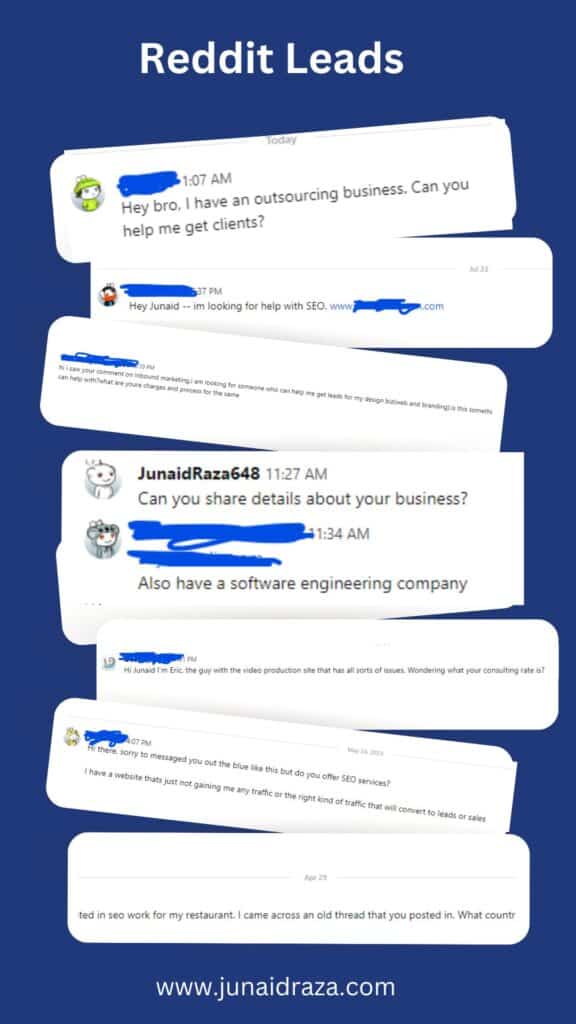
SEO (goldmine for BPO industry):
SEO (Search Engine Optimization) is an inbound marketing strategy that involves making your website appear on search engines, especially Google, for queries that your potential clients search for.
For instance, thousands of people search for BPO solutions on Google every day. If you appear to be on the first page of Google, you will attract those potential clients without any outreach.
For instance, look at this data that will make you realize how big this opportunity is:
If you are a customer care service provider, check out this data.
These top 3 results on Google attract over 5,000 potential clients without requiring any extra work. Someone optimized their website, and now it ranks at the top, keeping their pipeline full.
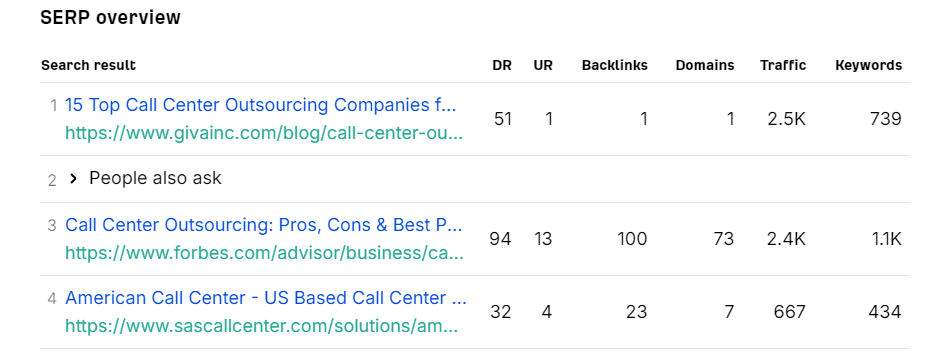
Similarly, check out this one.
This BPO company is receiving over $41K worth of traffic every month. This means that if you were spending $41K on Google paid search traffic, they are getting the same value of traffic without spending any extra dollars.
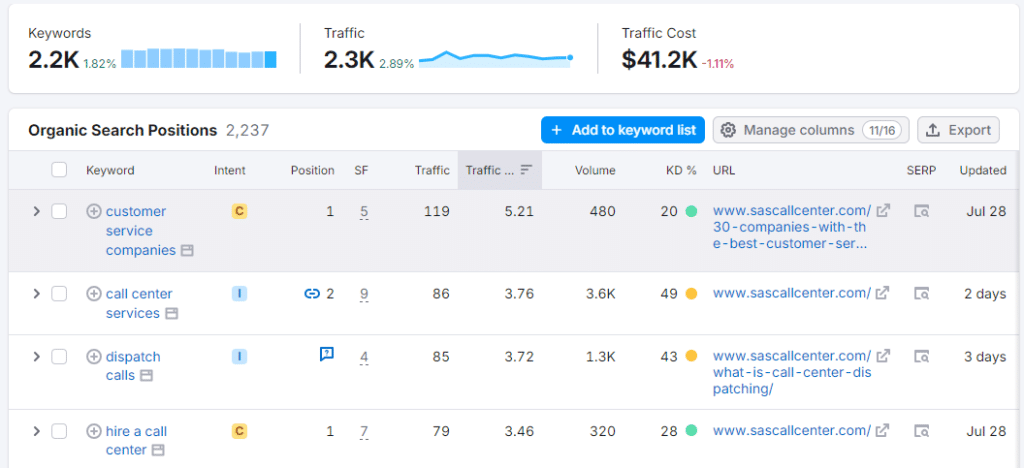
If you are a human resource (HR) BPO company, you can see how your competitor is getting organic web traffic without spending money on ads.
Businesses at the top of the results are receiving over 6K in organic traffic from just a single webpage.

If they have 50 pages on their website, imagine how large a market they are covering with SEO. It’s worth more than $100,000 in traffic they are securing with just a little effort.
Similarly, I have explained in this research how BPO companies from different domains are attracting tens of thousands of potential clients and how it saves them 16.25x money paid search.
Here is how to leverage SEO to get new clients consistently. These are the steps I follow to rank nearly all the pages I create on any website.
For example, I have only two SEO-optimized pages targeting BPO clients, and both rank on the first page for a variety of relevant keywords, such as “how to get BPO clients” and “get outsourcing clients”, etc.

Since the pages are still relatively new, they currently rank between positions 5 and 10. However, as the pages age and Google better understands their relevance and user experience (UX), they are expected to climb into the top 3 positions.
Here is another thing. If you follow these steps appropriately, you will not get qualified leads from Google but you will attract clients from all search engines.
For instance, I applied my SEO strategy to this project and it gets traffic from all search engines including ChatGPT.
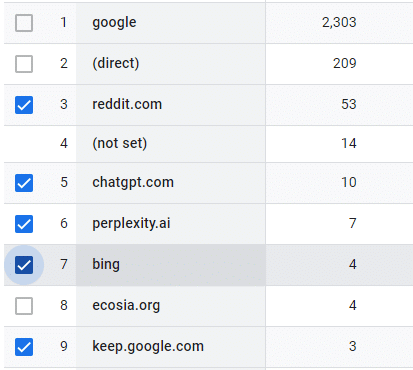
Here are the steps of my strategy that can drive you qualified leads from all major search engines.
Content strategy:
This is the first step where you define your goals and how to achieve them. It depends on your services. For example, if you offer IT outsourcing services, you’ll determine the types of content needed to educate, persuade, and convert your target audience.
You often rely on a funnel strategy, where you create content based on Tofu (Top of Funnel), Mofu (Middle of Funnel), Bofu (Bottom of Funnel), and Pofu (Post of Funnel).
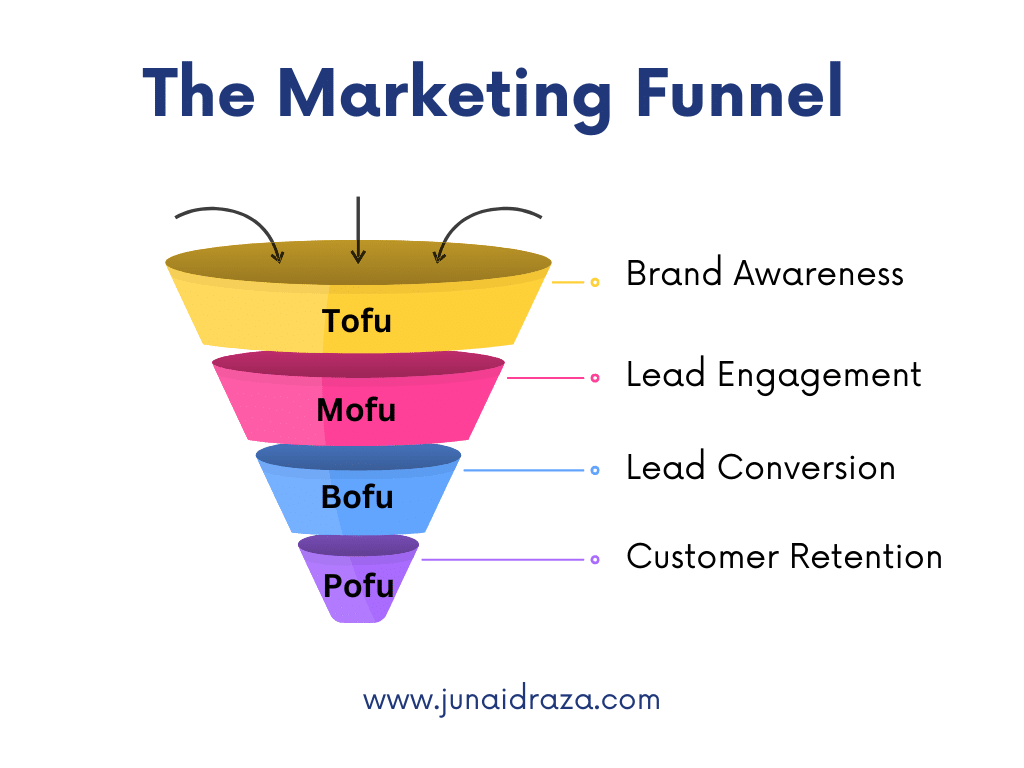
Find opportunities:
In this step, you find keywords and phrases that your potential clients might be searching for on Google to find your services. You can use tools like Keyword Planner, SEMrush, or Ahrefs to identify these opportunities.
For instance, here are opportunities for your offshore software development company. These have an estimated search volume of 5,570, and you can target these opportunities on a single landing page.
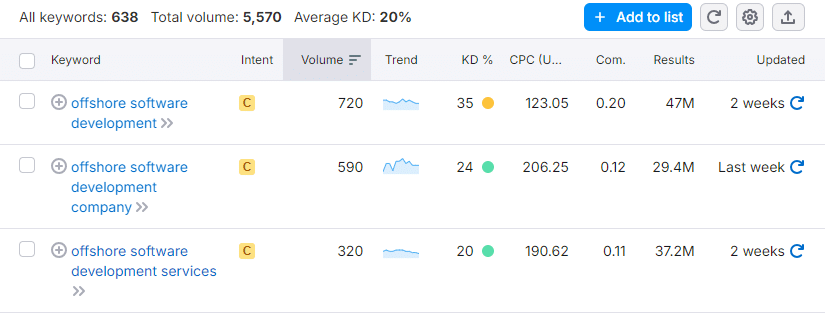
You can find 5 or 10 primary keywords based on your services. For instance, you might be offering:
- custom software creation
- mobile and web app development
- cloud solutions
- enterprise systems
- DevOps services
You can choose primary keywords for these landing pages. Additionally, you will choose keywords for Tofu and Mofu for brand awareness and navigational content.
Make site technically beast:
In this step, you fix technical issues of your website like focusing on 404 pages, core web vitals (CWV), and other crawling-related issues, etc.
Make it technically a beast.
It should be fast enough to pass Google’s recommendation for CWV.
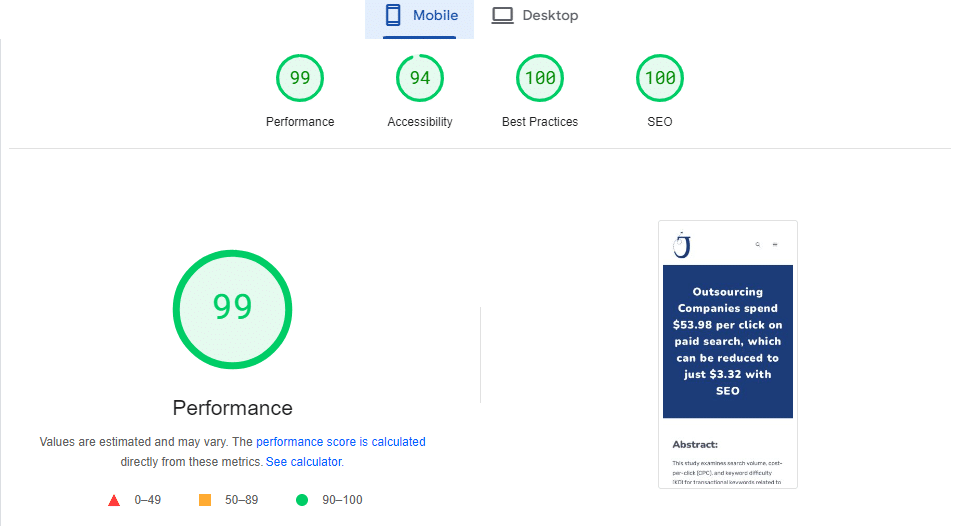
Studies show that every second of improvement in website speed can lead to a 17% increase in conversions.
Content Creation:
In this step, you should hire an SEO copywriter to produce highly compelling and optimized content that not only resonates with your audience but also enhances your brand’s positioning.
For instance, if you produce content with AI or hire a cheap writer, they can’t:
- Produce authoritative content.
- Integrate paid points effectively.
- Write persuasive copy that converts.
- Optimize the pieces naturally.
- Establish your central entity (your brand or value proposition) consistently on your website.
- Add compelling visuals.
- Do research to produce unique linkable assets.
Thus, if you want to build your brand, and improve conversions, you should either have an in-house copywriter or hire a freelancer.
Link building:
There are two types of links to build: internal and external. You should focus on both.
Internal links are easy to create, as you can link your own assets throughout the website.
For external links, you will need to run outreach campaigns. For instance, we reach out to bloggers and journalists (for digital PR) and also create linkable assets. Most bloggers charge between $100 to $500 per link.
If you cannot afford this, your primary focus should be on creating linkable assets and building relationships with journalists. Linkable assets are items that people want to link to, such as authoritative evergreen guides, statistics, and research.
Here’s an example of building relationships with journalists: I researched BPO client acquisition costs, produced a PR piece, and sent it to journalists. It was completely unique, so it achieved a very good open rate.

If you continue to send valuable assets to journalists and connect with them on social media, you can become a valuable resource for them, which can result in significant links.
As a result, you will see a major boost in rankings due to these external links. Once you follow these strategies, you could also attract $100,000 worth of traffic every month, and it will keep increasing over time.
Additionally, as you focus on transactional keywords, it will also generate inbound leads.
Here is a real example:

I didn’t know their business existed; they found me on Google and reached out to me. This is how you can get inbound leads around the clock.
Here are some benefits of SEO that you don’t get with other marketing strategies.
- It’s an inbound marketing strategy (your potential clients find you when they need you).
- It delivers long-term results (you enjoy the benefits for years to come).
- It enhances branding.
- It’s cost-effective.
- It doesn’t have much competition. It’s because its results start appearing in 6 months and companies prefer quick results. But they forget the long-term outcomes.
If you don’t want to manage all this yourself, you can leverage my B2B SEO services to handle everything for your brand, generate web traffic, and attract inbound leads.
Let’s discuss how I can help you generate consistent inbound leads.
Use cold outreach to acquire BPO clients:
Cold outreach is one of the most effective and quickest ways to generate business, and many companies rely on it. However, it’s not as easy as it sounds, especially in B2B, where complex sales processes are involved.
So, when you have an established identity, cold outreach should be among your top priorities.
There are two ways to outreach businesses:
Cold emailing:
Cold emailing is a widely used marketing strategy because it offers one of the highest returns on investment (ROI), especially in B2B. Some businesses claim it delivers a $36 return for every $1 spent, while others say it’s $22. Both are solid ROIs.
This can be true in high-transaction businesses, where even a single closed deal can generate substantial revenue.
Cold emailing involves a few necessary steps to follow:
Prospecting:
It’s the first stage of the sales cycle, where you find potential clients.
There are different ways to find clients.
- Manual research: You can do manual research. For instance, you can search ‘top healthcare companies’ on Google and find a lot of data. Similarly, you can use different keywords to identify potential clients.
- Use databases: Numerous platforms already have millions of contact details. You can use these, filter the data based on your ICP, and you’re done.
- Business directories: Directories like Clutch, Crunchbase, and many other platforms are great resources for prospecting.
- Freelancing platforms: There are freelancers with access to these databases who can provide you with contact details for just a fraction of the monthly charges. For example, if a platform charges $60, you might get the data for $10 from a freelancer who already has access.
Contact details:
In this step, you collect contact details. Depending on the method you choose, you can gather data accordingly.
If you’re not using a tool or database, you can use tools like Hunter to find contact details.
Here’s how the process looks:
First, identify companies interested in your service. For example, these healthcare companies might be your potential clients.
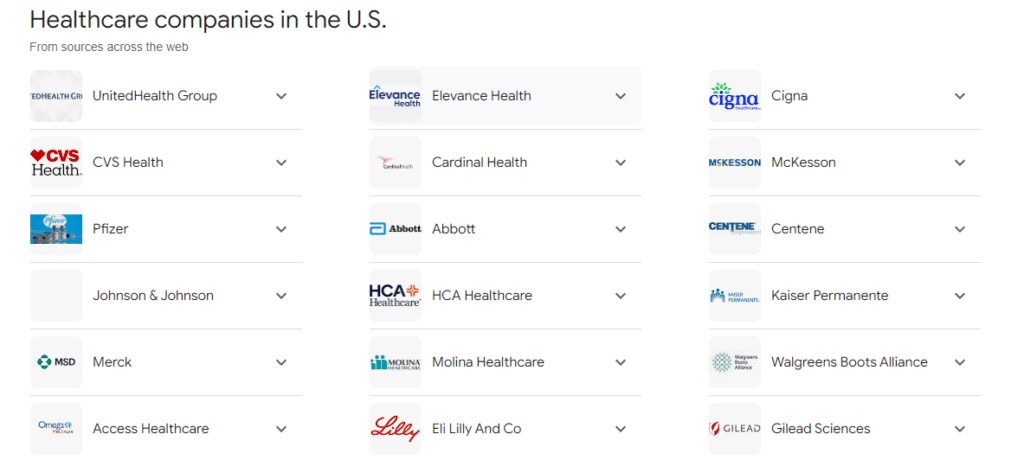
Next, prepare a list of the domains of all these companies.
For instance, when we prepare a list of BPO companies that use SEO, we use this data to analyze the search engine results pages (SERP). The primary goal is to determine how many websites leverage SEO and identify any loopholes they have.

Finally, use tools like Hunter to submit your domain data.

These tools will provide a list of contact details that you can export and upload to your CRM.
Emailing:
In this step, you reach out to your potential clients to offer them your services.
You can use any CRM like Hubspot, Mailchimp, close, or whatever suits you!
Then you need an attention-grabbing pitch.
Here is how I try to keep it simple yet attractive.
Subject: Keep urgency or FOMO in the title
First line: Discuss the pain point they are experiencing.
Second line: Explain the solution that can address their problem.
Third line: Highlight the outcomes they will achieve if they take advantage of the offer.
Simply ask, “Interested?” This often prompts people to respond.
Follow up:
Not all emails get a response. The average response rate is 8%. However, if you follow up, the rate can increase to 30%.
Cold calling:
Cold calling still works if done well.
The key is to ensure you are contacting the appropriate person at the right time. You can use databases or tools to collect the contact information of your potential clients.
Here are a few things to remember:
- Begin with a strong introduction
- Warm up your prospect before the call
- Use a personalized script to keep the conversation on track
PPC (SEM):
PPC or SEM involves running ads on search engines to appear above the organic results. This way, you attract clients who are looking for your services, but you pay for the exposure.
If you consistently use PPC, it can bring you at least a 2x ROI. However, it’s the least profitable strategy because the BPO industry has very competitive bidding, with companies paying $53.98 per click.
Despite this, hundreds of companies are leveraging this strategy.
In our recent research, we found that every transactional keyword on Google has at least six ads running. Some companies are very aggressive with these ads.
I’m sure they have enough budget to keep burning money until things smooth out and become profitable.
If you want quick results and have enough budget, you can turn ads on and traffic will come to you.
But make sure to build an authoritative online presence and a converting landing page before you start.
To do that, you can go to Google or Bing Keyword Planner to start your campaign.
Networking can bring you clients.
Networking is another key to success. Whether you want to kickstart your journey, or you are an established brand, you must focus on networking as it can help you scale your business to the next level.
Here are some strategies you can leverage to attract clients with networking:
- Attend Industry-Specific Conferences: Participate in events focused on industries that commonly outsource, such as finance, healthcare, or e-commerce. Networking at these events allows you to meet potential clients needing BPO services. With an exchange of business cards, you can offer your services later.
- Host Industry Roundtables or Webinars: Organize events where you bring together industry leaders to discuss challenges and trends in outsourcing. This positions your BPO company as a thought leader and provides a platform to meet potential clients.
- Partner with Complementary Service Providers: Build relationships with companies that offer complementary services, such as IT firms or consulting agencies. They can refer clients to your BPO services, creating a mutually beneficial partnership.
- Join Industry Associations: Become an active member of associations related to outsourcing and the industries you serve. Engage in discussions, attend meetings, and network with potential clients who are also members.
Leverage referrals to get clients:
Satisfied clients are your best marketing agents.
Satisfied clients can be your best promoters. If you’ve helped someone grow their business and ask them to refer you to their network, it won’t be difficult.
You can also ask for testimonials, which will significantly increase your chances of getting future referrals.
Additionally, offering a commission can give them even more incentive to promote your business.
Use online freelance platforms:
In some cases, freelancing platforms can play a significant role. For instance, if you are a digital marketing agency, you can attract a lot of work on platforms like Upwork.
I’ve read about many freelancers who started their agencies through freelancing platforms.
If you’re just getting started, you should prioritize this strategy because it can bring in business quickly.
Conclusion:
The strategies discussed above are proven best practices that successful companies use to attract clients across various sectors of outsourcing. Whether you’re aiming to get clients for IT outsourcing, call centers, or software development, these approaches are designed to meet your needs.
By implementing these B2B marketing strategies, companies in the outsourcing industry effectively connect with potential clients, secure valuable projects, and drive growth in their respective fields.
How do I market my outsourcing business?
There are many strategies to market an outsourcing business. Most BPO companies use cold outreach, paid search, and networking to find clients.
However, the SEO space is still largely untapped and offers a golden opportunity for outsourcing firms to attract clients and scale their businesses faster.
How to generate leads for an outsourcing business?
Generating leads for an outsourcing business involves using strategies like targeted cold outreach, leveraging online advertising, attending industry events, and inbound marketing strategies like search engine optimization (SEO).
These methods can significantly boost your lead generation efforts.
